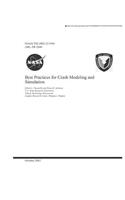
Best Practices for Crash Modeling and Simulation
Series:
Aviation safety can be greatly enhanced by the expeditious use of computer simulations of crash impact. Unlike automotive impact testing, which is now routine, experimental crash tests of even small aircraft are expensive and complex due to the high cost of the aircraft and the myriad of crash impact conditions that must be considered. Ultimately, the goal is to utilize full-scale crash simulation
NaN
VOLUME
English
Paperback

Aviation safety can be greatly enhanced by the expeditious use of computer simulations of crash impact. Unlike automotive impact testing, which is now routine, experimental crash tests of even small aircraft are expensive and complex due to the high cost of the aircraft and the myriad of crash impact conditions that must be considered. Ultimately, the goal is to utilize full-scale crash simulations of aircraft for design evaluation and certification. The objective of this publication is to describe "best practices" for modeling aircraft impact using explicit nonlinear dynamic finite element codes such as LS-DYNA, DYNA3D, and MSC.Dytran. Although "best practices" is somewhat relative, it is hoped that the authors' experience will help others to avoid some of the common pitfalls in modeling that are not documented in one single publication. In addition, a discussion of experimental data analysis, digital filtering, and test-analysis correlation is provided. Finally, some examples of aircraft crash simulations are described in several appendices following the main report.Fasanella, Edwin L. and Jackson, Karen E.Langley Research CenterAIRCRAFT SAFETY; NONLINEARITY; FINITE ELEMENT METHOD; AIRCRAFT ACCIDENTS; COMPUTERIZED SIMULATION; CRASHES; IMPACT TESTS; AIRCRAFT DESIGN; AUTOMOBILES; CERTIFICATION; CORRELATION; COSTS; FLIGHT SAFETY
Price Comparison [India]
In This Series
Bestseller Manga
Trending NEWS




















